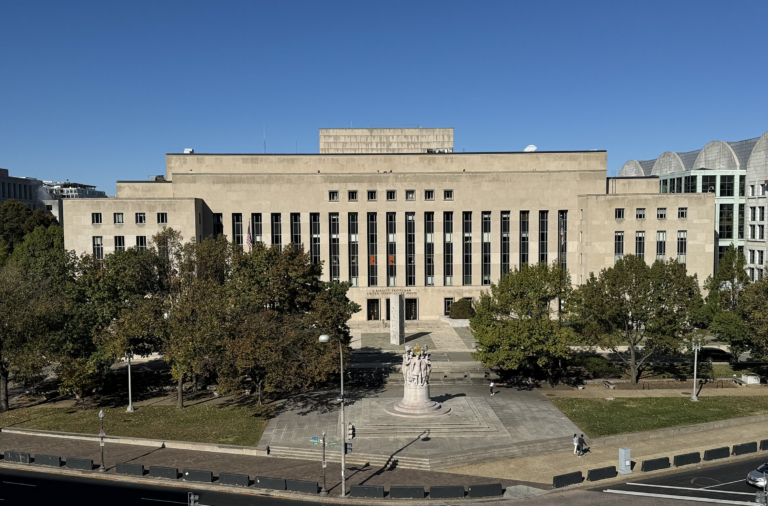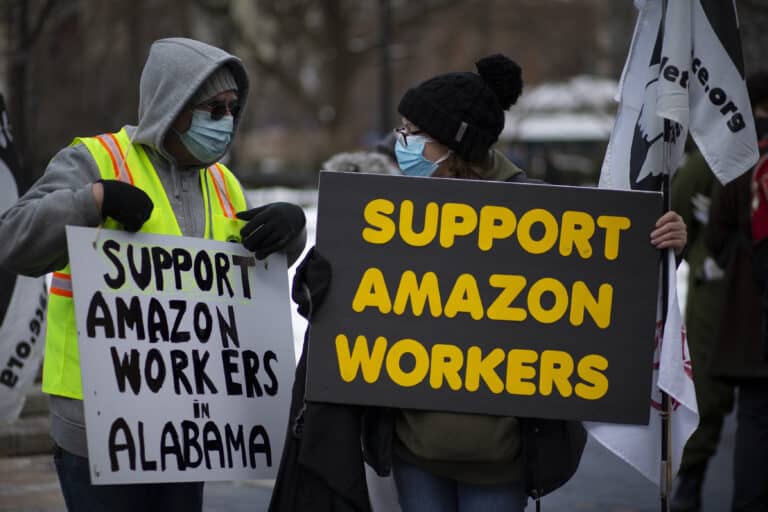
Mike Klain is a student at Harvard Law School and a member of the Labor and Employment Lab.
American University Communications Professor Patricia Aufderheide recently warned in the New York Times about the potential harms that might emerge from Amazon’s efforts to expand its presence in the film industry. Aufderheide’s column focused most intently on the threat posed by Amazon’s vertical integration in the industry, which ranges from upstream back-end internet services integral to the operation of streaming platforms provided by Amazon Web Services’ to the downstream distribution services provided by Amazon’s Fire Stick. Aufderheide warns that, amidst Amazon’s increasingly ambitious efforts to expand its content library through both organic investment and acquisitions, this vertical integration could gut the film industry. Aufderheide identifies reduced audience access to independent film libraries, increased obscurity about viewership patterns, and fewer distribution options for independent filmmakers as potential damage that Amazon’s vertical integration could cause.
Midway through the article, however, Aufderheide shares a quote from Amazon CEO Jeff Bezos that hints at the broader ambition underlying the company’s expansion in the film industry: “When we win a Golden Globe, it helps us sell more shoes.” This quote suggests that Amazon’s end game is not necessarily to vertically integrate and dominate the film industry for its own sake, but rather to expand its entertainment offerings in an effort to gain even more share in the e-commerce space, where its market share of United States sales has grown to over forty percent. Bezos’ hypothesis is that an by amassing an expansive content library, and requiring that prospective viewers sign up for Amazon Prime in order to access that library, the company can attract valuable new Amazon Prime e-commerce customers (of which there are already more than 200 million).
There’s some early evidence that Amazon’s entertainment content is drawing in new Prime e-commerce customers; in 2018, Amazon internal documents showed that the company attributed roughly 5 million Prime subscriptions and renewals to Prime Video content from 2014 to 2017. If it’s true that Amazon’s aspiration with its film segment is genuinely to drive users into the e-commerce segment, the company may not even require that its entertainment products turn a profit. While it’s difficult to parse whether Amazon’s entertainment arm currently operates profitably, and even harder to know for sure whether it will in the future, Professor of Entertainment Finance at LMU David Offenberg warns that, “[t]he important thing to remember about Amazon Prime Video is that it’s a loss leader.” Amazon is actually notoriously opaque about its viewership figures and offers very little information about the profitability of its entertainment arm, perhaps intentionally to avoid attracting scrutiny about the loss-leader strategy. This dynamic is important to watch because if scrutiny is aimed solely at Amazon’s impact on the film industry, considerable harm to workers in other industries may be overlooked.
As a result, consumers of entertainment content may rejoice while Amazon escalates its efforts in the budding streaming wars, as it already boasts the second largest content budget of any streaming player. It has used this massive budget to acquire and develop fan favorites, such as its acquisition of the Bond library, its development of a Lord of the Rings series, and its acquisition of the right to televise the National Football League’s Thursday Night games for eleven years beginning in 2022. Further, Auferdheide’s worst fears about potential harms to independent filmmakers might not come to pass. If Amazon finds that independent film consumers are disproportionately unlikely to be Amazon Prime members, it may invest more heavily in cultivating content from these creators than would be possible at a profit-motivated company. To expand its reach in commerce, Amazon might just break the link between art and profit.
But by growing its share of the commerce sector, Amazon will be able to extract a toll on its workers. Several recent academic studies have found that concentration in labor markets causes direct harm to workers. A 2017 paper from Jose Azar, Ioana Elena Marinescu, and Marshall Steinbaum found a statistically significant relationship between labor market concentration and wages. According to their research, “going from the 25th percentile to the 75th percentile in concentration is associated with a 17% decline in posted wages, suggesting that concentration increases labor market power.” A 2018 paper by Josh Bivens, Lawrence Mishel, and John Schmitt corroborated these findings. The authors concluded that labor market concentration reduced wage growth by an estimated 0.03 percent annually between 1979 and 2014 – a modest but compounding effect over time. Finally, Efraim Benmelech, Nittai Bergman, and Hyunseob Kim in 2018 analyzed the impact of labor market concentration on the manufacturing sector. The authors found not only that higher levels of concentration were associated with lower levels of wages, but also that the negative relationship was even stronger where unionization rates were low.
In addition to research on the labor market more broadly, recent analysis of Amazon specifically has found that Amazon’s size already allows it to extract a toll on its workers. Amazon’s outsized market share has allowed it to depress the number of retail jobs available, lower the prevailing wage in areas where it operates warehouses, and run one of the most dangerous workplaces in the United States by the National Council on Occupational Safety and Health. Further, a recent report revealed more information about how Amazon monitored the products that sold best on its website, produced generic versions of the products, sold them for a slightly lower price than competitors, and manipulated search results to boost the Amazon-made versions. This tactic not only allows Amazon to steal share and therefore increase its monopsonistic stranglehold on the workforce, but also suppress innovation by reducing the returns to creating new business offerings. If Amazon can use its entertainment business to drive even more users to its marketplace, it can collect even more data about consumer preferences and enhance the efficacy of its knock-off business.
Policymakers seeking to limit Amazon’s ability to convert Prime members into shoe customers have several options. First, the Federal Trade Commission can investigate Amazon’s acquisitions of entertainment content, as it will with Amazon’s acquisition of MGM. In her column, Aufderheide suggests that this strategy could have promise, pointing to the success of the Justice Department’s 1938 lawsuit about, and the Supreme Court’s subsequent break-up of, the era’s eight major film studios. Still, given Amazon’s vast resource pool, Amazon may be able to grow its content library organically, thereby limiting the impact that Department of Justice or FTC scrutiny could have. Another option would be for lawmakers to pass legislation requiring that Amazon charge separate subscription fees for access to its entertainment content and access to its e-commerce platform. This solution would break the link between the entertainment and e-commerce businesses and prevent Amazon from using entertainment as a loss leader.










Daily News & Commentary
Start your day with our roundup of the latest labor developments. See all
July 15
The Department of Labor announces new guidance around Occupational Safety and Health Administration penalty and debt collection procedures; a Cornell University graduate student challenges graduate student employee-status under the National Labor Relations Act; the Supreme Court clears the way for the Trump administration to move forward with a significant staff reduction at the Department of Education.
July 14
More circuits weigh in on two-step certification; Uber challengers Seattle deactivation ordinance.
July 13
APWU and USPS ratify a new contract, ICE barred from racial profiling in Los Angeles, and the fight continues over the dismantling of NIOSH
July 11
Regional director orders election without Board quorum; 9th Circuit pauses injunction on Executive Order; Driverless car legislation in Massachusetts
July 10
Wisconsin Supreme Court holds UW Health nurses are not covered by Wisconsin’s Labor Peace Act; a district judge denies the request to stay an injunction pending appeal; the NFLPA appeals an arbitration decision.
July 9
the Supreme Court allows Trump to proceed with mass firings; Secretary of Agriculture suggests Medicaid recipients replace deported migrant farmworkers; DHS ends TPS for Nicaragua and Honduras